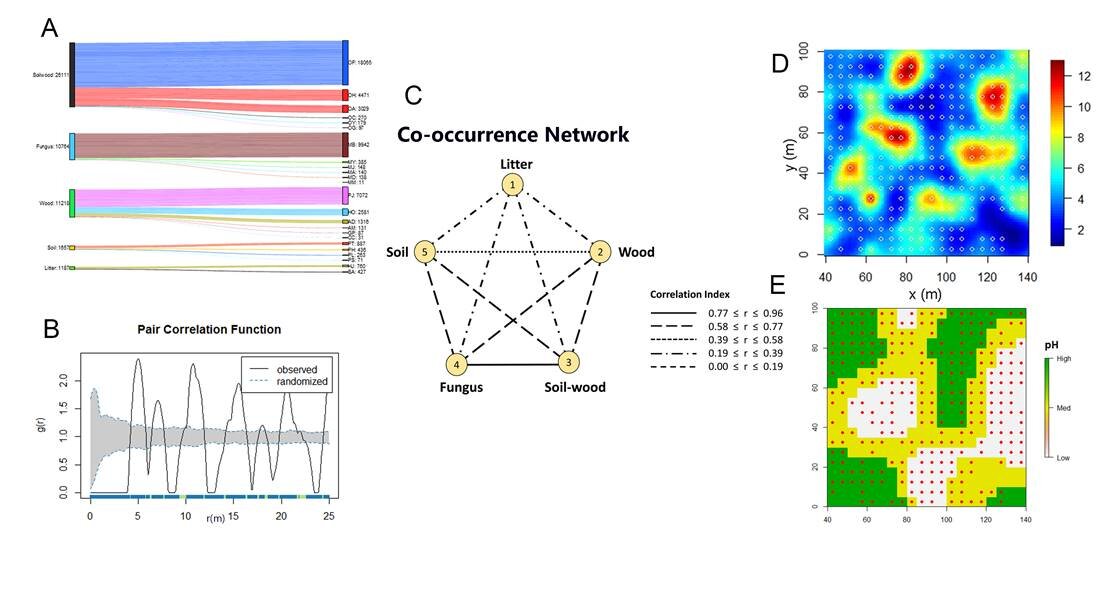#Topography and soil pH found to steer the activity-density and spatial distribution of termites in a fine-scale study

Table of Contents
“Topography and soil pH found to steer the activity-density and spatial distribution of termites in a fine-scale study”

Soil fauna, especially termites, are essential for sustainable forest ecosystems and significantly influence soil quality. The community composition and activity density of termites can influence nutrient cycling and other ecological functions.
Understanding the spatial distribution and activity density of termites at the feeding group and species levels on a fine scale in tropical forests could extend our knowledge of functional and behavioral dissimilarities among these factors. A new study reveals that the spatial distribution of termites is influenced by topography and soil pH. The researchers’ finding appeared in Soil Ecology Letters.
From this study, the authors reported interesting new findings. For instance, interspecific competitions or associations were observed on a scale of tens of meters. They also found the influences of plant biomass and litter mass on different feeding groups of termites. These findings are fundamental in uncovering the intermingled ecosystem processes of highly diverse tropical rainforests.
Doctor Liu, from the research team, says that “there are very few studies on the properties of termite activity density. We believe that this study will help us extend our understanding of the distribution of termites across the Asia-Pacific region. Our study is uniquely designed to detect not only the spatial activity density of termites but also their response to environmental influences at the fine scale.”
In the study, they found that soil-wood feeders (Odontotermes) were the dominant feeding group and were reactive to the amount of plant biomass, while fungus growers (Macrotermes), the second most widely distributed feeding group, showed responsiveness to the amount of litter mass. These results are slightly different from those of previous studies. However, this study was based on a quantitative approach to understanding the cause-and-effect mechanisms between the termites and the associated environment. This study shows that topography and soil pH are the most influential factors for the activity density of termites. This finding reaffirms that these factors are important not only for the other taxa in the soil ecosystem but also for the termites, especially at the fine scale.
“We analyzed using both quantitative and qualitative methods to detect the spatial significance of termites in a relatively small range of elevation and environmental conditions. We believe that this study is a good starting point for the future exploration of termite community assembly mechanisms,” said Doctor Xia. The co-occurrence network generated from the coefficients of closeness could explain how feeding groups can exist together and how they are functionally related. This could explain why the dominance of a group of termites has an ecological impact on the existence of other groups and associated regulating capacities.
Understanding a fine-scale ecological process can fundamentally provide us with a deeper understanding of larger-scale complex processes. This study highlighted that not all sympatric feeding groups show competition for food resources and that not all separated groups have any impacts or interactions with others. In biologically diverse and complicated tropical rainforests, a small change in the fine-scale environmental conditions can have a great influence on the distribution, diversity, and activity density of termites. This study provides empirical findings on termite assemblages in a tropical rainforest that explain the species distribution, cooccurrence, and response to environmental heterogeneity on a fine scale.
Termites mitigate effects of drought in tropical rainforests
Myo Thant et al, Activity-density and spatial distribution of termites on a fine-scale in a tropical rainforest in Xishuangbanna, southwest China, Soil Ecology Letters (2022). DOI: 10.1007/s42832-022-0141-7
Provided by
Higher Education Press
Citation:
Topography and soil pH found to steer the activity-density and spatial distribution of termites in a fine-scale study (2022, May 20)
retrieved 20 May 2022
from https://phys.org/news/2022-05-topography-soil-ph-activity-density-spatial.html
This document is subject to copyright. Apart from any fair dealing for the purpose of private study or research, no
part may be reproduced without the written permission. The content is provided for information purposes only.
If you liked the article, do not forget to share it with your friends. Follow us on Google News too, click on the star and choose us from your favorites.
For forums sites go to Forum.BuradaBiliyorum.Com
If you want to read more Like this articles, you can visit our Science category.



